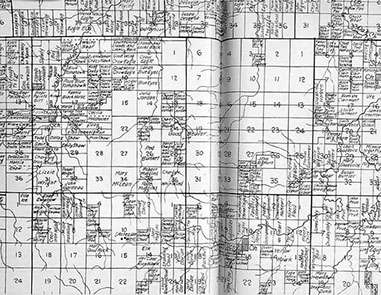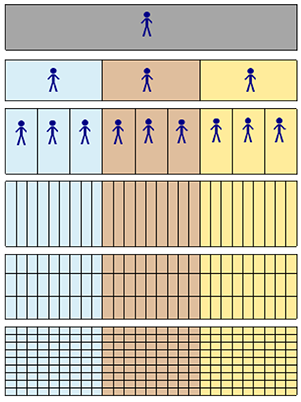MENU
Land Fractionation
The Result of Allotment
Historical Background:
The Dawes Act (General Allotment Act of 1887)
DOWNLOAD PDF
MENU
The Dawes Act...
- Authorized the President of the United States to survey Indian tribal land and divide it into allotments for individual Indians.
- Indian Reorganization Act of 1934 ended allotment.
- Effects of this policy can still be felt today in the resulting fractionation of trust land.

Indian Allotments on the
Rosebud Reservation, 1903
(from the Records of the Bureau of
Indian Affairs, National Archives)

Fractionation:
A Serious Problem
Facing Communities
- As tracts (or allotments) of lands are passed down through generations, they gain more and more individual owners.
- Because the number of owners make it difficult to use the land, these allotments often lie idle and cannot be used for any beneficial purpose.
- Currently, there are approximately 150 locations with fractionated tracts of land, with approximately 243,000 unique owners.
An illustration depicting fractionation
of a possible allotment of land over
six generations, assuming only
three heirs per generation.
Original Allotment
100 acres
2nd Generation, 1/3
3rd Generation, 1/9
4th Generation, 1/27
5th Generation, 1/81
6th Generation, 1/243
